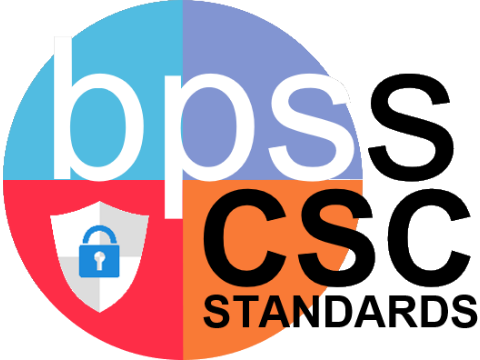BPS District Computer Science and Cybersecurity Standards Book
K-12 Grade Levels
Grade 01
CSC-01.TS TS Technology Systems
Sub-Concepts
(NI) Network & Internet - Networks link computers and devices locally and around the world allowing people to access and communicate information.
(HS) Hardware & Software - Devices, hardware, and software work together as a system to accomplish tasks..
(T) Troubleshooting - Strategies for solving technology system problems.
- CSC-01.TS_NI.1 Recognize that connecting computing devices allows information sharing.
- CSC-01.TS_HS.1 Use appropriate terminology to identify common computing devices and components.
- CSC-01.TS_HS.2 With guidance, use a computing device to perform a variety of tasks.
- CSC-01.TS_HS.3 Recognize users have different technology needs.
- CSC-01.TS_T.1 Understand technology systems might not work as expected and with guidance, use appropriate terminology to describe a problem.
CSC-01.CT CT Computational Thinking
Sub-Concepts
(PSA) Problem Solving & Algorithms - Strategies for understanding and solving problems.
(DCA) Data Creation & Analysis - Data can be collected, used, and presented with computing devices or digital tools.
(DD) Development & Design - Design processes to create new, useful, and imaginative solutions to problems.
- CSC-01.CT_PSA.1 Solve a problem through trial and error using given materials/resources.
- CSC-01.CT_PSA.2 Follow a set of instructions (algorithms) in order to complete a task.
- CSC-01.CT_PSA.3 Define debug.
- CSC-01.CT_PSA.4 Identify and practice debugging strategies including 'Go back to when it worked’.
- CSC-01.CT_DCA.1 With guidance, identify and interpret data from a chart or graph in order to make a prediction with or without a computing device.
- CSC-01.CT_DD.1 With guidance, create programs to accomplish tasks that includes sequencing or looping.
CSC-01.IL IL Information Literacy
Sub-Concepts
(A) Access - Effective search strategies can locate information for intellectual or creative pursuits.
(E) Evaluate - Information sources can be evaluated for accuracy, currency, appropriateness, and purpose.
(C) Create - It is important to both consume and produce information to be digitally literate.
(IP) Intellectual Property - Respect for the rights and obligations of using and sharing intellectual property.
- CSC-01.IL_A.1 Use a keyword search with a teacher-selected online resource.
- CSC-01.IL_E.1 With guidance, evaluate information for research purposes.
- CSC-01.IL_C.1 Independently or with guidance, create a digital product.
- CSC-01.IL_IP.1 I Understand that creative works have owners.
- CSC-01.IL_IP.2 With guidance, give credit to the creator of a creative work.
CSC-01.CS CS Computers in Society
Sub-Concepts
(IC) Impacts of Computing - Past, present, and possible future impact of technology on society.
(SI) Social Interactions - Technology facilitates collaboration with others.
- CSC-01.CS_IC.1 Identify how technologies are used in and out of school.
- CSC-01.CS_SI.1 With guidance, use technology to share thinking with peers.
CSC-01.DC DC Digital Citizenship
Sub-Concepts
(SE) Safety & Ethics - There are both positive and negative impacts in social and ethical behaviors for using technology.
(RU) Responsible Use - Respect and dignity in virtual communities.
(DI) Digital Identity - Responsibilities and opportunities of living, learning and working in an interconnected digital world.
- CSC-01.DC_SE.1 Identify how to use technology in safe and correct ways. (CYSEC)
- CSC-01.DC_SE.2 Understand the differences between a username and authentication methods and independently use them to access technology. (CYSEC)
- CSC-01.DC_RU.1 Identify positive and negative behaviors when using electronic communication. (CYSEC)
- CSC-01.DC_RU.2 Discuss reporting inappropriate electronic content. (CYSEC)
- CSC-01.DC_RU.4 Comply with Acceptable Use Policies.
- CSC-01.DC_DI.1 Recognize that you have a digital identity.





